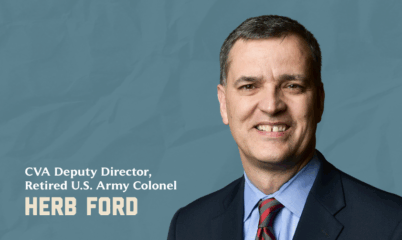CVA Memo: Why We Need The ‘Caring For Our Heroes In The 21st Century Act’
Summary
Following the revelations in Phoenix in 2014, the nation became aware of an undeniable reality: the Department of Veterans Affairs is in desperate need of systemic reform. Veterans are waiting too long for care, often subjected to substandard treatment and finding themselves unable to access private care even when the VA proves unable to offer it. This memo will examine the necessity for reform and the need for the “Caring for Our Heroes in the 21st Century Act,” because while it is clear that the VA should be an issue of our time, there are those who seek to deny the obvious for partisan, political reasons.
Reason #1: Veterans are Still Waiting Too Long for Care
The most shocking thing about the Phoenix scandal was that it exposed the excessively long wait times veterans are forced to endure. Report after report has shown that veterans across the country are still forced to endure long wait times as a matter of course.
CNN reported in October 2015 that the number of veterans waiting more than 30 days for appointments has actually increased, with even Deputy VA Secretary Sloan Gibson admitting “a structural challenge” in addressing the issue. The VA’s own data shows that as of May 15, 2016, 505,880 veterans are waiting more than a month for care, 150,000 more veterans than were waiting that long in October 2014.”
In February, the VA Inspector General, in one of many such reports, showed this national problem has implications for local veterans. In Colorado Springs, hundreds of veterans were forced to wait for care. Specifically, the inspector general reviewed 450 cases and found that in 288 of them, veterans waited more than a month for care, and in 59 of these cases, wait times were manipulated to make it look like veterans were not waiting as long as they had.
More recently, the Government Accountability Office found in April that veterans at six different VA facilities across the country were being forced to wait anywhere from 22 to 71 days for primary care appointments. To make matters worse, the way VA records wait times made it appear that veterans were receiving care much faster than they actually were. Because VA starts the wait time clock when the VA contacts the veteran, rather than when the veteran applies for care and requests to be contacted to schedule an appointment, VA’s reported wait times are artificially lower. In the case of one veteran who waited 76 days from applying to actually receiving care, the VA recorded his wait time as two days. Such a system begs for reform.
Some have argued that waits in the private sector are just as bad, but this argument misses important points. First, veterans should still be able to choose, which we will discuss shortly, but second, the research, such as that conducted by Lee and Begley and published in the Journal of Public Health Management and Practice this year, found that, in fact, veterans wait longer for care than their private-sector counterparts. Using a sample of more than 10,000 individuals, the pair found that 17 percent of Americans experience delays getting care, but 29 percent veterans experience such delays.
There is simply no room for debate: wait times are not improving, and the structure of the VA offers no hope of improvement.
Reason #2: The Status Quo Enables Veteran Deaths
This reality is simply unavoidable: the VA as structured enables a system that has led to the deaths of hundreds of veterans. In Phoenix alone, nearly 300 veterans lost their lives because they were unable to get care from the VA. In California, a veteran attempted suicide because he was frustrated with the VA’s continued rescheduling of his appointments―rescheduling done to manipulate wait times.
Further, the wait list investigation reports released by the inspector general this spring have shown extensive wait list manipulation and intimidation at VA facilities across the country. From Louisiana to Florida to Illinois to Arkansas to Texas, wait list manipulation was systemic in dozens of facilities by an untold number of employees. One can only wonder how many veterans are put at risk in such a system.
Reason #3: The VA Needs Structural, Systemic Change
Deputy Secretary Gibson is not the only one who understands the need for systemic reform of the VA. In September 2015, the congressionally mandated Independent Assessment of the Veterans Health Administration found “systemic, critical problems and confirmed the need for change… Solving these problems will demand far-reaching and complex changes that, when taken together, amount to no less than a system-wide reworking of VHA.” The assessment also declared “… the number of issues VHA currently faces appears overwhelming. In its current state, VHA is not well positioned to succeed…” These problems ranged from the delivery of care to “a leadership crisis” to subpar facility management, but they all pointed to the assessment’s underlying conclusion: things are “pretty bad” with the current VHA structure.
Reason #4: There is a Lack of Accountability at the VA
The structure of the VA makes delivery of timely care a guessing game, but the lack of accountability is a key enabler of that poor performance. Every week brings one more story to the public’s attention of employees acting out in ways that no private sector employer would tolerate, and yet only rarely is there even the slightest movement toward accountability.
In Phoenix, it took two years for the VA to propose the firing of officials who oversaw the wait list scandal, and it may take another two years for them to be removed, if at all. The VA handed out $142 million in bonuses in 2014, some of which went to officials in charge of botched construction projects and medical centers responsible for poor treatment of veterans. An employee arrested for armed robbery was allowed to keep her job. Her reasoning? Other members of her office were convicted criminals and yet were allowed to keep their jobs, so why should she be singled out?
These are just a handful of examples, barely scratching the surface of the corruption and culture of evasion at the Department of Veterans Affairs. Veterans know what’s going on, and they are rightly tired of it. Only a reformed VA will make a change.
Reason #5: Veterans Want and Deserve the Ability to Choose Their Doctor
Polling shows veterans agree with the concept that they should have choice in where to get their care. A March 2016 Gallup poll found 91 percent of the public think veterans should be able “to get healthcare at any healthcare provider that accepts Medicare, not just Veterans Administration medical facilities.” According to a recent Tarrance group poll commissioned by CVA, 89 percent of veterans think they should have more health care choice, and 91 percent agree with the statement that veterans should have more choice even if it means paying a little bit more out of pocket.
Further, a recent poll by The American Legion found that a majority of respondents believe the Choice Program should be expanded to all veterans. Of the 643 individuals who responded to the Legion’s online poll, 464 agreed with the concept that veterans should have choice. Of six options, by far the most popular was “Yes, because veterans have earned the right to choose where they receive their health care.” Though this poll is unscientific, and Concerned Veterans for America does not think expansion of the Choice Program itself is the best way to offer more choice, it is instructive as a gauge of everyday veterans’ thoughts about care, and the passion they have for the issue.
What’s more, veterans deserve to choose where they get their care. Under the status quo, they are the only federally subsidized population who do not have this choice. Demographics who do? Military retirees, Medicare recipients, federal employees, Obamacare exchange enrollees, civilians with employer-provided insurance, and refugees and legal immigrants.
The Solution: The “Caring for Our Heroes in the 21st Century Act”
The legislation to address these issues is simple, yet has the potential to improve the lives of millions of veterans. It is called the “Caring for Our Heroes in the 21st Century Act.”
RESTRUCTURING THE VETERANS HEALTH ADMINISTRATION
The legislation does several things. First, it separates the VA’s payer and provider functions to ensure that veterans can receive timely care of their choosing. The payer function will be administered by a new office within the VHA, and the brick-and-mortar medical centers and clinics will be managed by a government-chartered nonprofit corporation. Veterans will be able to use the same clinics, see the same doctors, with the only difference being how those clinics and doctors are managed.
EXPANDING VETERANS’ HEALTH CARE CHOICES
The proposal would also offer a premium support model for veterans who wish to receive their care from a non-VA provider. This support will be fiscally responsible and offer every veteran a true choice. Enrolled veterans over the age of 65, and those who qualify for Medicare due to disability, would gain the option of using their VA funds to defray the costs of Medicare premiums and supplemental coverage.
MONITORING THE PROGRESS OF VETERANS’ HEALTH REFORM
The legislation also establishes a board of directors to oversee operations of the nonprofit government corporation managing delivery of care and advise the VA on further reforms, and also an advisory commission, a nonpartisan legislative agency, to implement the legislation. Congress would also maintain oversight and funding roles.
Conclusion
Ultimately, this reform would be a solution for the issues listed above. It would offer veterans real choice, enable better access and timely delivery of care, and give VA employees an incentive to pursue accountability. The only question is whether Congress will side with veterans, or whether it will allow special interests and entrenched bureaucrats to determine how we as a nation treat our heroes in this century.




